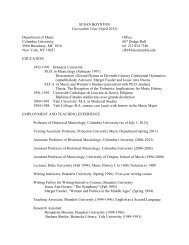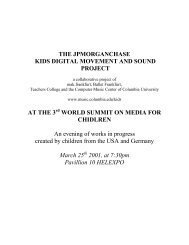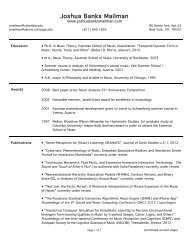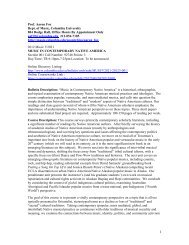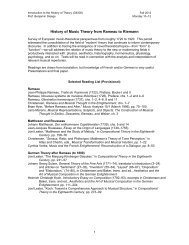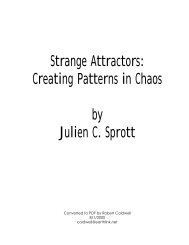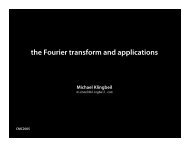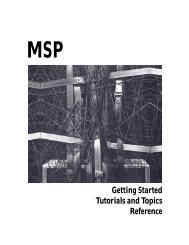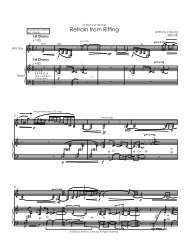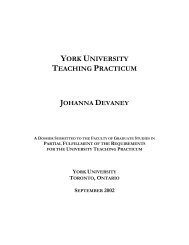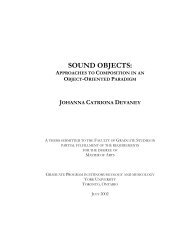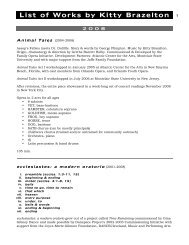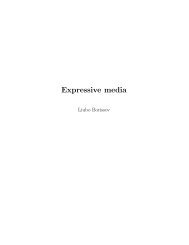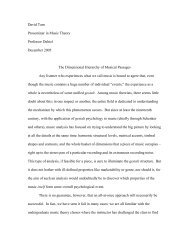Text, including the two scores - Columbia University Department of ...
Text, including the two scores - Columbia University Department of ...
Text, including the two scores - Columbia University Department of ...
You also want an ePaper? Increase the reach of your titles
YUMPU automatically turns print PDFs into web optimized ePapers that Google loves.
32 cases, relations between phrases <strong>of</strong> notes or slices <strong>of</strong> a sound are precisely both<br />
determined at a small scale, while creating a potentially unruly and unpredictable large-scale result. In terms <strong>of</strong> maintaining a relation between electronic sound and instrumental notes, I value <strong>the</strong> Spectral use <strong>of</strong> analysis, resyn<strong>the</strong>sis, and rationally<br />
<strong>of</strong> a sound signal into discrete note data. For my own works, however, I found it less interesting to orchestrate harmonic sounds (or statically inharmonic sounds, such as bells/gongs). I have instead been drawn to sounds that are noisy, chaotic, and o<strong>the</strong>rwise difficult to orchestrate. In orchestration<br />
Aleph Two, <strong>the</strong>se types <strong>of</strong> sounds include industrial ambiences, metallic clanks, and rickety motors; in American Engineer (for quintet <strong>of</strong> Cardinality<br />
instruments), <strong>the</strong> sound source is, ironically, <strong>the</strong> recording <strong>of</strong> a full orchestra itself, though a recording <strong>of</strong> reduced fidelity, which gets fur<strong>the</strong>r reduced to orchestration <strong>of</strong> its prominent fundamentals and overtones. Given that <strong>the</strong> orchestrated result <strong>of</strong> my chosen sound <strong>of</strong>ten bears only acoustic<br />
faint resemblance to <strong>the</strong> original itself, I present <strong>the</strong> original sound and orchestrated notes simultaneously in performance. I do this not just for <strong>the</strong> ‘aha’ factor <strong>of</strong> recognizing <strong>the</strong> causal correlation that <strong>the</strong> latter is derived from <strong>the</strong> former, but also to highlight <strong>the</strong> disparity created between <strong>the</strong> <strong>two</strong> sounds. a<br />
obvious data loss from sound to note data emphasizes <strong>the</strong> inherent inability to compress a chaotic signal into a smaller amount <strong>of</strong> information. In The<br />
to notated pitches reflecting <strong>the</strong> resonances <strong>of</strong> sampled sounds, I also push that relation to its inversion (in Cardinality Aleph Two), where simple, syn<strong>the</strong>tic tones function as <strong>the</strong> fur<strong>the</strong>r reduction <strong>of</strong> current instrumental note<br />
addition



